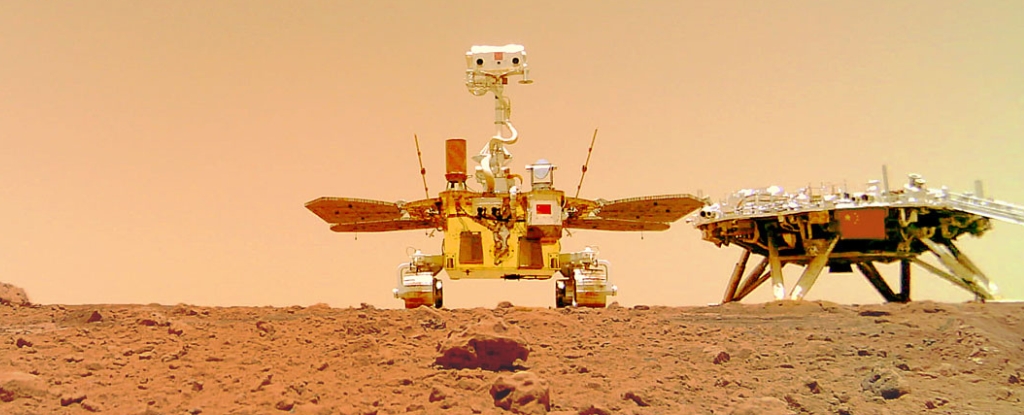Mars’ surface appears quite lifeless, with its soil being several times drier than Earth’s driest desert, toxic air, and temperatures that range from one extreme to the other. However, evidence suggests that the planet was once much warmer and wetter, with standing and flowing water on its surface. Over time, most of this water was lost to space as Mars’ atmosphere was slowly stripped away, leaving behind glacial ice and permafrost concentrated around the poles. Space agencies have been sending robotic landers, rovers, orbiters, and aerial vehicles to Mars for years, seeking to learn more about this transition and how long it took.
China’s Tianwen-1 Mission
China’s Tianwen-1 mission, which includes the Zhurong rover, has suggested that liquid water might have been present on the Martian surface later than previously believed. According to new research from the Chinese Academy of Sciences (CAS), the Zhurong rover observed salt-rich dunes in the Utopia Planitia region with cracks and crusts, indicating the possible presence of water as recently as a few hundred thousand years ago.
The Zhurong rover observed interesting features on the surfaces of Barchan dunes in Utopia Planitia that are similar to dunes that appear in deserts all across Earth. These dunes result from high winds depositing sand in a crescent shape, with the curved side facing in the direction of the wind. When observing a patch of dunes in the southern part of Utopia Planitia, Zhurong noted crusts, cracks, aggregates, and bright polygonal ridges. These features were formed from small pockets of water from thawing frost or snow mixed with mineral salts. Once the water sublimated in Mars’ atmosphere, patches of hard crust and loose material were left behind, along with depressions and ridges. The team estimates that these features formed between 1.4 million and 400,000 years ago, indicating that a hydrological cycle existed recently on Mars.
The team also ran computer simulations and combined them with observations made by other robotic missions. These indicated that conditions could be suitable in other regions on Mars for frost and ice to form during certain times of the year, leading to similar features elsewhere. This discovery sheds light on more humid conditions of the modern Martian climate and provides critical clues to future exploration missions searching for signs of extant life, particularly at low latitudes with comparatively warmer, more amenable surface temperatures.
Conclusion
This discovery could also point toward the existence of small patches of fertile ground where microbial life could still exist today. However, additional studies are needed before any of this can be said with confidence. Those studies may have to wait on future missions, as the rover has not yet woken up from hibernation. The rover spent roughly a year exploring the surface of Mars before it went into hibernation on 20 May 2022. As of 5 May 2022, Zhurong also managed to travel 1,921 meters (1.194 miles) across the surface. If the China National Space Agency is unable to reactivate the rover before long and decides to conclude the mission, Zhurong could not have picked a more profound discovery to go out on!



Leave a Reply